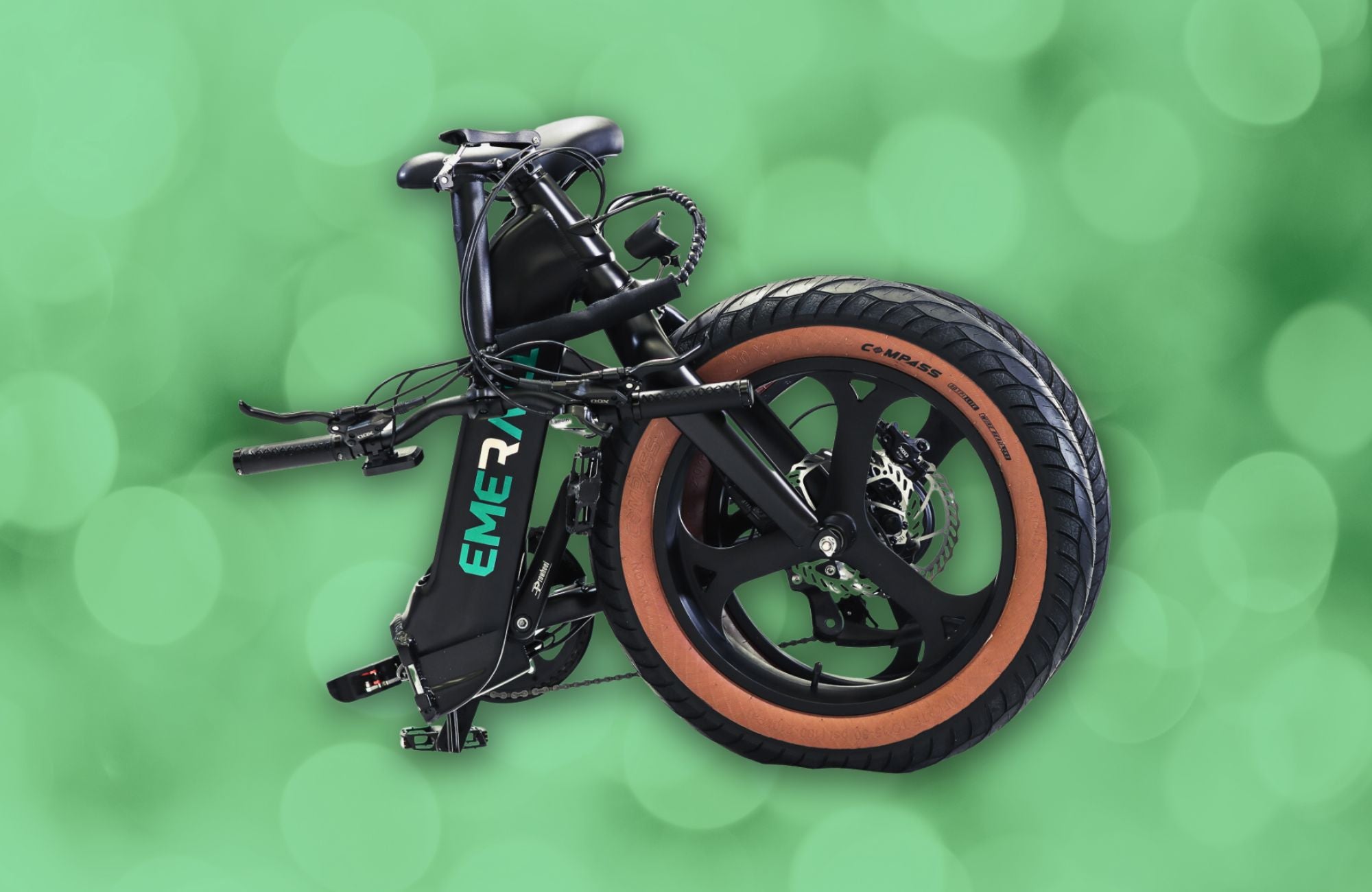One of the critical components that determine an ebike's usability and performance is its battery. Understanding the science behind ebike batteries, including their range, charging capabilities, and overall performance, is essential for every ebike enthusiast.
In this article, we will delve into the intricacies of ebike batteries to shed light on their functionality and help you make informed decisions about your next ebike purchase.
(Click the banner below to shop our ebike now!)

Table of Contents
- The Evolution of Ebike Batteries
- Types of Ebike Batteries
- Factors Affecting Battery Range
- Understanding Battery Charging
- Maximizing Battery Performance
- The Impact of Weather on Battery Performance
- Ebike Battery Safety
- Upgrading Ebike Batteries
- Ebike Batteries vs. Other Power Sources
- Future Innovations in Ebike Batteries
The Evolution of Ebike Batteries
The history of ebike batteries dates back to the early 1990s when lead-acid batteries were predominantly used. These batteries were heavy, had limited capacity, and were not environmentally friendly. As technology advanced, lithium-ion (Li-Ion) batteries emerged as the preferred choice due to their higher energy density, lighter weight, and longer lifespan.
Types of Ebike Batteries
Lithium-Ion (Li-Ion) Batteries
Lithium-ion batteries are the most common type used in modern ebikes. They are known for their high energy density, low self-discharge rate, and lightweight. Li-Ion batteries offer a good balance between capacity, weight, and overall performance,
making them ideal for most ebike applications.
Nickel-Metal Hydride (NiMH) Batteries
While not as prevalent as Li-Ion batteries, NiMH batteries were commonly used in earlier ebike models. They have a lower energy density than Li-Ion batteries, making them bulkier and heavier for the same capacity. NiMH batteries are becoming less common due to their limited performance compared to Li-Ion.
Lead-Acid Batteries
Lead-acid batteries were among the first used in ebikes, but they have significant disadvantages such as high weight, low energy density, and limited cycle life. They are gradually being phased out in favor of more advanced battery technologies.
Factors Affecting Battery Range
Several factors influence an ebike battery's range, determining how far it can travel on a single charge:
Battery Capacity
The battery's capacity is measured in watt-hours (Wh) and directly affects the range. Higher capacity batteries can provide more power and cover longer distances before requiring a recharge.
Terrain and Riding Conditions
Riding on steep hills or rough terrains consumes more energy, reducing the battery's range. On the other hand, riding on flat roads and smooth surfaces conserves energy, extending the range.
Rider's Weight and Pedal Assistance Level
Heavier riders and higher pedal assistance levels demand more power from the battery, resulting in decreased range. Conversely, lighter riders and lower assistance levels can achieve a longer range.
Understanding Battery Charging
Efficient battery charging is essential for maintaining its performance and lifespan:
Charging Cycles and Battery Lifespan
Each time you recharge your ebike battery, it completes one charging cycle. Li-Ion batteries can typically handle several hundred cycles before experiencing a notable capacity decrease.
Fast Charging vs. Slow Charging
Fast charging can be convenient, but it generates more heat, potentially affecting battery health over time. Slow charging is gentler on the battery and can lead to better long-term performance.
Best Practices for Battery Charging
To maximize battery lifespan, avoid charging to 100% or discharging to 0% frequently. Maintaining a charge level between 20% and 80% is recommended for daily use.
Maximizing Battery Performance
Proper maintenance and care can enhance the performance and longevity of your ebike battery:
Proper Battery Storage
Storing your ebike battery in a cool, dry place away from direct sunlight and extreme temperatures can preserve its health during periods of non-use.
Maintaining Optimal Tire Pressure
Keeping your tires inflated to the recommended pressure can reduce rolling resistance, helping your ebike use less battery power during rides.
Regular Maintenance and Inspections
The Impact of Weather on Battery Performance
Weather conditions can influence the efficiency of your ebike battery:
Cold Weather Effects
Cold temperatures can reduce battery performance and overall range. Keeping the battery at a moderate temperature can help counteract this effect.
Hot Weather Effects
High temperatures can also affect battery performance, potentially causing overheating. Adequate cooling measures can mitigate the impact of heat on the battery.
Ebike Battery Safety
Safety is paramount when it comes to ebike batteries:
Avoiding Overheating and Overcharging
Never leave your ebike battery charging unattended and avoid exposing it to extreme heat. Overcharging can lead to safety hazards and reduced battery life.
Safe Battery Disposal
When it's time to replace your ebike battery, ensure its safe disposal by following local regulations and recycling guidelines for electronic waste.
Upgrading Ebike Batteries
When considering an upgrade, keep these factors in mind:
Compatibility Considerations
Ensure that the new battery you plan to install is compatible with your ebike's specifications and power requirements.
DIY Battery Upgrades vs. Professional Installation
While some experienced users may attempt DIY battery upgrades, professional installation is recommended to prevent potential damage and ensure optimal performance.
Ebike Batteries vs. Other Power Sources
Comparing ebike batteries to alternative power sources:
Pros and Cons of Lithium-Ion vs. Lead-Acid Batteries
Lithium-ion batteries outperform lead-acid batteries in terms of weight, capacity, and lifespan. However, lead-acid batteries may be more affordable for some users.
Ebike Batteries vs. Gasoline Engines
Future Innovations in Ebike Batteries
The future looks promising for ebike battery technology:
Solid-State Batteries
Solid-state batteries, still in development, promise even higher energy densities and increased safety, potentially revolutionizing ebike battery technology.
Battery Swapping Stations
Battery swapping stations might become a widespread solution, enabling quick and easy battery replacements for extended rides.
Wireless Charging Technology
Wireless charging technology could eliminate the need for physical charging ports, streamlining the charging process for ebike batteries.
Final Thoughts
Understanding the science behind ebike batteries is essential for optimizing their performance and extending their lifespan. By considering factors like battery capacity, charging habits, maintenance, and weather effects, you can make the most out of your ebike and enjoy a smoother, more efficient ride.
(Click the banner below to shop our ebike now!)











Leave a comment
This site is protected by reCAPTCHA and the Google Privacy Policy and Terms of Service apply.